As wingfoil continues to evolve and attract riders of all levels, the details of equipment tuning are becoming increasingly relevant—not just for pros chasing performance, but also for casual foilers who want to make the most of every session. One often overlooked but highly impactful aspect of wingfoil equipment setup is the rake angle of the foil. While terms like lift, mast height, and wing size are commonly discussed, “rake” can feel a bit more technical or obscure. Yet, once understood, it becomes clear how important it is for control, efficiency, and personal comfort on the water. Whether you’re just stepping into the sport or you’ve already logged dozens of sessions, understanding how rake adjustment affects your riding can unlock new levels of stability, speed, and responsiveness.
What Is Rake in Wingfoil?
In the context of wingfoil, rake refers to the angle at which the foil mast is mounted relative to the board—essentially tilting the entire foil setup either forward (more nose-down) or backward (more nose-up). It’s often adjusted using shims placed between the mast and the board mount, though some boards and foil systems allow for more precise adjustments via integrated tracks or slotted mounts.
This angle might seem subtle, but it affects the behavior of the entire foil system. Rake influences how early your board lifts off, how stable it feels at speed, how much front or back foot pressure is needed to stay balanced, and how reactive the foil becomes during turns or when pumping. Think of it as tuning the “stance” of your foil underwater—small tweaks can dramatically alter how the board responds to your input.
How Rake Adjustment Affects Lift and Stability
One of the most immediate effects of changing rake is how early your board lifts out of the water. Increasing the rake (tilting the foil slightly forward) effectively increases the angle of attack of the front wing, generating more lift at lower speeds. This can be incredibly helpful in light wind conditions or when you’re riding a smaller wing and need to take off with minimal pumping. It allows you to plane earlier and pop onto foil sooner, which makes your sessions more efficient and enjoyable.
However, there’s a trade-off. More lift at low speed can mean more instability at higher speeds. If the foil generates too much lift too early, it can feel twitchy or overly sensitive once you’re flying. The board might pitch upward unexpectedly or require constant adjustments with your rear foot. On the flip side, reducing the rake (less nose-down angle) will make the foil feel more stable and predictable at higher speeds, although it may delay takeoff slightly and require more pumping effort to get going.
Foot Pressure and Ride Comfort
Another major consideration when adjusting rake is how it impacts your stance and the pressure you feel in your feet while foiling. With more rake (greater front wing angle), you’ll typically feel more front-foot pressure—meaning you have to lean forward more actively to counterbalance the lift. Some riders like this, especially in wave-riding scenarios, because it gives a feeling of connection and control over the nose of the board.
In contrast, less rake usually shifts more pressure to the back foot. This can be more comfortable over longer sessions or for cruising, but too much rear-foot pressure can also make the foil harder to control during maneuvers. Adjusting rake becomes a matter of personal preference and use case: for high-speed riding or race-like conditions, a flatter rake can help maintain comfort and prevent fatigue. For tighter turns, lighter wind, or wave work, a more aggressive rake might be ideal.
Tuning Your Wingfoil Equipment: How to Adjust Rake Safely
Before making any changes to rake, it’s important to understand your wingfoil equipment and how it’s built. Not all boards or foil setups support rake adjustment. If your gear includes shim options or an adjustable baseplate, you’re in luck—this makes fine-tuning easier and safer. Start with small changes: 1-degree or 2-degree shims are standard, and even these can produce noticeable differences on the water.
Make sure that all screws and mounting bolts are fully tightened after any change. A loose mast plate not only changes the rake mid-session but can also be dangerous. When in doubt, consult your foil or board manufacturer’s tuning guide. Many brands now include rake and shim recommendations based on rider weight, wing size, and board volume, helping you make smarter choices without guesswork.
Also, remember that any rake change affects the geometry of the board/foil system. This means that your footstrap placement, mast position, and even leash attachment might feel different afterward. Take a few short, controlled runs after making adjustments and give your body time to adapt before judging the results.
Adapting Rake to Your Skill Level
If you’re still in the early stages of learning to wingfoil, your priority should be ease of lift and stability. In this case, a slightly increased rake can help you take off sooner and spend more time flying rather than struggling in the water. As your skills develop and you gain confidence in foot placement and foil control, you can start reducing rake for a more stable, locked-in feel at cruising speed.
Intermediate riders often experiment the most with rake, as they begin to ride in more varied conditions and explore different styles—wave riding, downwinders, or even jumping. At this stage, dialing in your rake is less about a fixed “correct” setting and more about adjusting based on the day’s conditions and your personal goals for the session.
Advanced riders, particularly those focused on speed, freestyle, or racing, may adjust rake regularly depending on wind strength, swell size, and board setup. These riders often develop an intuitive sense of what their foil needs to perform its best, and rake becomes just another tool in the tuning kit—just like adjusting the pressure in a tire or the tension in a kite line.
How Rake Interacts with Other Elements of Your Setup
Rake doesn’t exist in isolation. It’s part of a larger system, and any change in rake interacts with other elements of your wingfoil equipment, including mast length, fuselage size, front wing surface area, and tail stabilizer angle. For instance, a longer mast can exaggerate the effects of a small rake change, making the setup feel twitchier if not balanced properly. Similarly, large front wings with a lot of lift may not need as much rake to get going, whereas smaller, faster wings might benefit from a slightly nose-down angle to increase low-speed performance.
Your board’s rocker and tail design also play a role. Boards with a flat tail and low rocker line are more sensitive to rake changes, and small tweaks can result in big differences in ride feel. That’s why experimenting safely—on a familiar board, in known conditions—is the best way to learn how rake adjustments affect your performance.
Final Thoughts: Small Adjustments, Big Results
Rake adjustment may seem like a small technical detail, but its impact on your wingfoil experience is substantial. Whether you’re seeking earlier takeoffs, more stable rides, or better control in turns and waves, dialing in the rake of your wingfoil equipment is a powerful step toward mastering your setup. The key is to make changes gradually, observe their effects in real conditions, and take notes on what works best for your riding style and goals.
Wingfoiling is a dynamic sport, and part of the fun lies in discovering how small tweaks can lead to big breakthroughs. As you become more in tune with your gear, adjusting rake won’t feel like a chore—it’ll feel like unlocking new dimensions of performance.

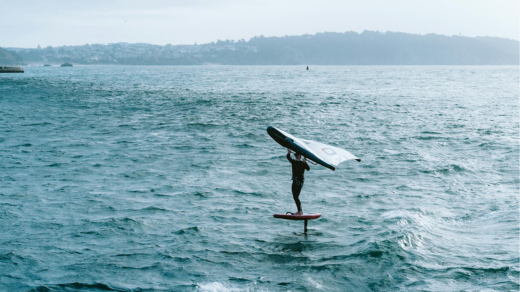



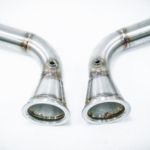
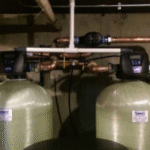
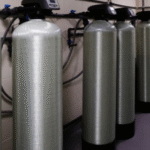
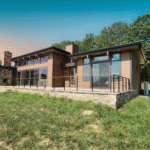
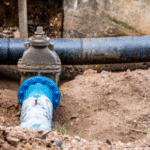
Leave a Reply
You must be logged in to post a comment.